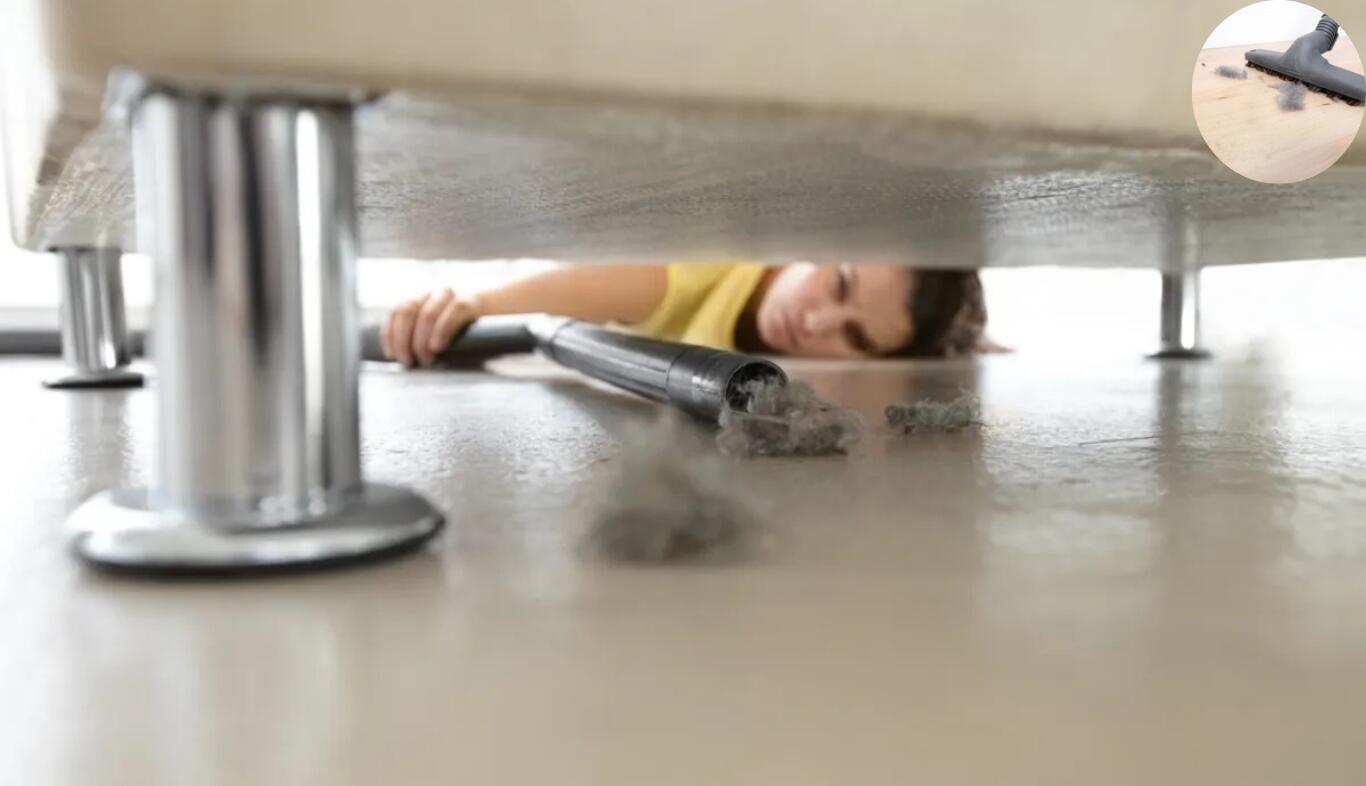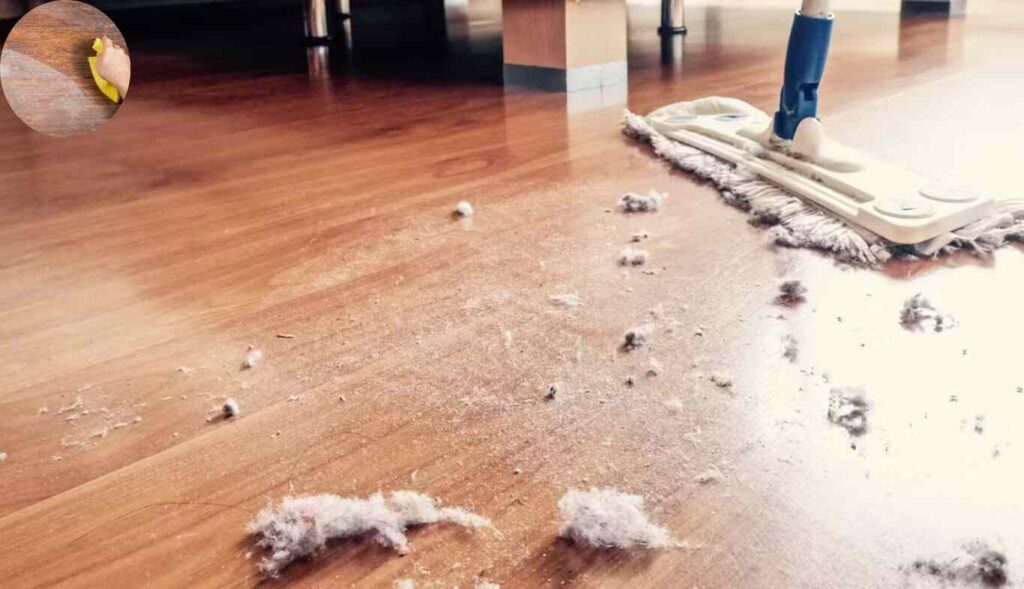Dust bunnies under your couch? A perpetual layer of particles settling on every surface? If you’re constantly battling dust, know that you’re not alone. Dust accumulation is a common frustration for homeowners everywhere. But why is there so much dust in your house, and more importantly, what can you do about it?
What Is Dust?

Dust is more than the fine layer of grime that gathers on your furniture. It’s a complex mixture of particles that exist both indoors and outdoors. Understanding what dust is made of can help you identify where it’s coming from and how to tackle it effectively.
Composition of Dust
Dust is made up of a surprising variety of materials, including:
- Dead skin cells
- Pet dander (tiny flecks of skin and fur shed by animals)
- Pollen
- Soil and dirt particles
- Textile fibers from clothing, carpets, and furniture
- Mold spores
- Microscopic insects like dust mites
Each home’s dust composition varies based on its environment, the people (or pets) who live in it, and the materials within it.
Why Dust Matters
Dust isn’t just an aesthetic nuisance; it can have serious implications for your health. Dust particles are often carriers of allergens such as pollen, pet dander, and dust mites. For individuals with allergies or respiratory conditions like asthma, chronic exposure to dust can worsen symptoms. Additionally, prolonged exposure to dust can affect indoor air quality, leading to discomfort and health risks for everyone in the home.
Top Causes of Excessive Dust in Homes

Dust in your home doesn’t appear out of nowhere. It’s often a combination of environmental factors, human habits, and indoor conditions. Let’s take a closer look at the most common sources of dust.
A. Environmental Factors
1. Outdoor Sources
The environment outside your home has a significant impact on the dust inside it. Pollen, soil particles, and even debris from nearby construction sites can easily enter through open windows, doors, or on your shoes. Living in a high-traffic or urban area may result in more dust entering your home.
2. Climate
Dry climates or seasons with low humidity can make dust worse. Dry air allows particles to stay airborne longer, making it easier for them to settle on your furniture and floors.
B. Human Activity
1. Foot Traffic
Shoes are one of the biggest culprits when it comes to bringing dirt and dust into your home. The more foot traffic there is, the more dust particles make their way inside.
2. Pet Dander
If you have pets, their fur and dander (tiny skin flakes) are a significant contributor to household dust. Even regularly grooming your furry friends doesn’t eliminate this completely.
C. Indoor Sources
1. Furniture and Fabrics
Soft furnishings like upholstery, carpets, and curtains shed fibers over time, adding to the dust in your home. The more fabric-heavy your home is, the more dust you’ll notice.
2. HVAC Systems
Your home’s heating, ventilation, and air conditioning (HVAC) systems can also contribute to dust. If your air filters are clogged or of poor quality, they might circulate dust instead of trapping it.
D. Lifestyle Habits
1. Cleaning Frequency
Infrequent or improper cleaning is a major reason for excessive dust. Without regular vacuuming, dusting, and washing, particles accumulate and become more noticeable.
Health Risks of Chronic Dust Exposure

Dust isn’t just a cleaning challenge; it’s a health concern, especially for those with allergies or respiratory issues. Let’s explore how dust can affect your well-being.
A. Allergies & Respiratory Issues
Dust mites, pollen, and mold spores found in dust are common allergens. For individuals who are sensitive, exposure can lead to:
- Sneezing
- Itchy, watery eyes
- Runny nose
- Coughing or wheezing
B. Long-Term Effects
For people with asthma, prolonged exposure to dust can trigger frequent attacks or worsen symptoms. Additionally, dust can irritate the skin, leading to rashes or other dermatological conditions.
Tip: If you or your family members experience allergy-like symptoms often, consider improving your home’s dust management strategies.
Proven Strategies to Reduce Dust

While you can’t eliminate dust completely, there are plenty of effective ways to keep it under control. Here are some practical tips to tackle the problem.
A. Cleaning Routines
1. Use the Right Tools
Invest in tools designed to trap dust rather than spread it around. For example:
- HEPA vacuums: These vacuums trap fine particles that regular ones might miss.
- Microfiber cloths: Unlike regular dusters, microfiber traps dust instead of pushing it around.
2. Set a Cleaning Schedule
- Daily: Wipe high-traffic surfaces like countertops and tables.
- Weekly: Vacuum carpets, rugs, and furniture.
- Monthly: Wash curtains and deep-clean less accessible areas like behind furniture.
B. Home Modifications
1. Air Purifiers
Use air purifiers with HEPA filters to improve indoor air quality by capturing allergens like dust mites and pollen.
2. Replace Carpets
Carpets are notorious dust magnets. If possible, opt for hard flooring like hardwood, laminate, or tiles, which are easier to keep clean.
C. Lifestyle Adjustments
1. Establish Shoe-Free Zones
Place doormats at entryways and encourage family members and guests to leave their shoes at the door.
2. Groom Pets Regularly
Brushing your pets often (preferably outside) reduces the amount of fur and dander they shed indoors.
Advanced Solutions for Persistent Dust

If regular cleaning and basic strategies aren’t enough, consider these advanced solutions.
A. Professional Duct Cleaning
Over time, your HVAC system’s ducts can accumulate a significant amount of dust. Hiring a professional to clean them ensures that dust isn’t being circulated throughout your home.
B. Smart Home Devices
Modern technology offers several tools to help manage dust:
- Air Quality Monitors: These devices can detect dust levels in your home and alert you when they’re high.
- Automated Vacuums: Robotic vacuums are great for daily maintenance, especially in homes with pets.
Comparison Table: Dust-Reducing Tools
| Tool | Purpose | Effectiveness | Cost |
|---|---|---|---|
| HEPA Vacuum | Traps fine dust particles | Very effective | Moderate-High |
| Microfiber Cloths | Dust trapping on surfaces | Highly effective | Low |
| Air Purifiers | Removes airborne dust and allergens | Highly effective | Moderate-High |
| Smart Vacuums | Daily floor cleaning | Moderately effective | High |
| Professional Duct Cleaning | Reduces dust circulation | Highly effective | High |
Conclusion
Dust is an inevitable part of life, but it doesn’t have to take over your home. By understanding the causes of household dust, recognizing its impact on your health, and implementing practical dust prevention tips, you can create a cleaner, healthier living environment. Whether it’s developing better cleaning habits, investing in air purifiers, or tackling persistent dust with professional services, every small step makes a difference.
Also read (category cleaning)
